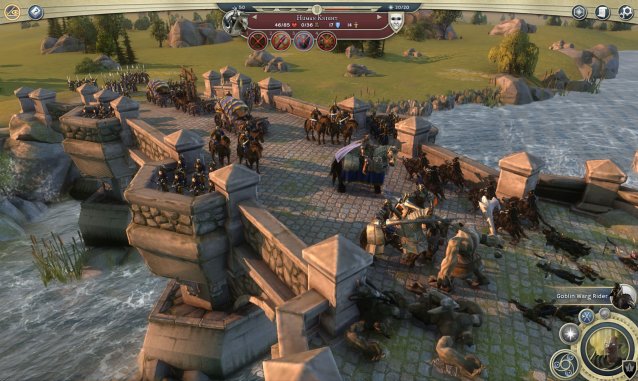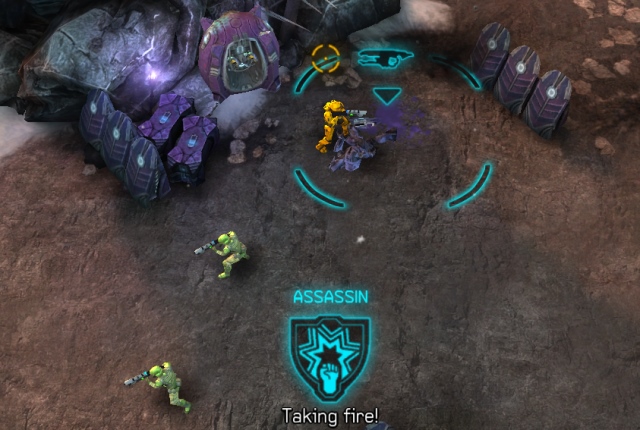

Spider-Man returns to theaters this Summer in Marc Webb’s reboot of the blockbuster film franchise. In addition to his new big screen adventure, Spidey once again graces smaller screens in a game tied to the movie. The Amazing Spider-Man marks the long awaited return of open-world web swinging to the Webbed Wonder’s digital adventures.
Does the game transcend its origins as a licensed movie-tie in, or is it only for die-hard fans of the film? Read our full review of The Amazing Spider-Man for the answer.
The Amazing Spider-Man opens with an extended, first-person expository sequence that recalls the beginnings of both Half-Life and, more tellingly, Batman: Arkham Asylum. Following the events of the film (purists beware — the game does contain a few spoilers) Peter Parker and Gwen Stacy tour the Oscorp building where they meet Alistaire Smythe, a scientist working on robotics and nanotechnology. Needless to say, things go horribly wrong, Gwen is captured, and Peter has to suit up to face twin threats: a robotic army, and the cross-species virus, which is mutating the inhabitants of Manhattan.
The Amazing Spider-Man starts slowly, and initially sets its wall-crawling, web-swinging action indoors. This doesn’t do the game any favors, as confined spaces highlight its shortcomings: drab, jagged graphics, remedial, brain-dead enemy AI, and an overly-forgiving combat system. It does, however, give the developers time to introduce the game’s defining mechanic, the Web Rush. Longtime Spidey game fans may have been clamoring for a return to the open-world web swinging made famous by Treyarch’s Spider-Man 2: The Game, but the Web Rush is what truly makes The Amazing Spider-Man worth playing.
The Web Rush mechanic allows Spider-Man to slow time to a crawl, line-up an enemy or a spot in the environment, and quickly dash straight to it. When Spidey first makes his way outside, he is immediately greeted by an enormous foe — the giant mech seen in the first Amazing Spider-Man trailer. Swinging all around the imposing enemy, it’s easy for a player to lose bearing, but Web Rush makes targeting and attacking specific points on the mech a breeze. It’s an instantly fun, easy to grasp mechanic that makes traversal simple, and it’s the best thing about the game.
That’s not to say that open-world web-swinging isn’t fun on its own — it is. The Amazing Spider-Man forgoes any kind of strict realism — those webs don’t actually connect to anything — though players generally can’t swing any higher than the nearest tall building (boss encounters are an exception). Take a trip through the park, and Pete will have to navigate at tree level.
As an open-world game, The Amazing Spider-Man offers players all kinds of distractions from the main quest. Unlike many other examples of the genre, those distractions are dolled out slowly here. There are comic books to collect, crimes to stop, infected citizens who need medical attention, secret labs to infiltrate, and more. Perhaps the best of the side-missions are photography assignments that offer a few clues and require Spider-Man to explore an (admittedly small) area and snap the requisite pics (there are photos to take in story missions, too).
Then there is Bruce Campbell’s Extreme Reporter, who offers a series of point to point races and stunt challenges to our hero. The stunt challenges are peculiar in that players don’t control Spider-Man, but rather a robotic video camera (that looks suspiciously like Black Ops 2’s Quadrotor), and must simply keep Spidey in-frame. These sequences allow the designers to show off Spider-Man’s excellent character model and animation — graphically, the best thing about the game — and award easy XP.
There is another unusual aspect to the game’s side-missions: they are surprisingly finite. A number of them are dolled out between each chapter of The Amazing Spider-Man’s story, and more after its conclusion, but comic collecting aside, completing all the side missions isn’t a huge time investment, and none of them are particularly difficult. At the very least, they give Spidey a good reason to explore the city.
Manhattan, as presented in the game, is impressively large, and traversing the city remains inherently joyous throughout the experience. Unfortunately, the city is short on graphical detail and never feels believably “alive.” Textures pop in and jagged edges abound, and there are too few distinct characters roaming about.
To its credit, The Amazing Spider-Man gets better as it goes on. Partially, this is due to the upgrades players earn throughout the game — Spidey’s fighting abilities, tech and suit can be improved — but it’s also true that story levels gain in creativity as they progress. A sequence near the end robs Spider-Man of his signature abilities (and shows that Oscorp, ostensibly a cutting-edge tech firm, is powered by a remarkably leaky network of steam-pipes), while the final boss battle gives Spidey a goal other than merely beating the tar out of yet another villain.
Also good is the game’s voice acting, particularly Sam Riegel as Spider-Man. None of the actors from the film reprise their roles, and Riegel sounds much more like Toby Maguire than Andrew Garfield, but he always manages to find the right tone for Spidey’s many quips and observations. Nolan North is reliably strong as Smythe (don’t miss his post-credit scene), and the other actors, including Kari Wahlgren, Steve Blum and Claudia Black (of Kingdoms of Amalur fame) acquit themselves well.
Nevertheless, there is an elephant in the room that can’t escape comment. The Amazing Spider-Man borrows liberally — extensively, even — from Rocksteady Studios‘ Batman games. Combat in Spider-Man works exactly as it does in Arkham City, though with substantially less finesse: a combo meter counts up with each successful blow, unlocking more powerful moves as it builds, and an onscreen prompt (Pete’s Spidey Sense) tells players when to counter. Tech and suit upgrades mirror Rocksteady’s games, there are audio files to find, even an analog of Batman’s challenge rooms — hidden Oscorp facilities that require Spider-Man to “strike from the shadows,” stealthily eliminating all enemies in a confined area.
On one hand, this design choice is understandable. Batman: Arkham City is a superb superhero game (read our review), and ignoring its contributions to the genre would be short-sighted. But given the freshness of the Web Rush mechanic, and remembering that this is Beenox‘s third Spider-Man game, the developer’s adherence to the Arkham formula is disappointing. Additionally, technical issues, while rare, mar the experience. While playing for review, the game totally locked up twice, and on another occasion it briefly lost track of which direction was “down.”
Still, swinging through Manhattan as Spider-Man is a blast, and Web Rush is a great mechanic that begs further use. Yes, The Amazing Spider-Man is derivative and graphically underwhelming, but it’s also breezily playable and cheerfully entertaining. It may be nothing more than a movie tie-in game, but The Amazing Spider-Man is a good movie tie-in game, and worth a look even by players who aren’t fans of the film.
The Amazing Spider-Man is available now for PS3, Xbox 360, Wii, 3DS and DS. Game Rant reviewed the PS3 version of the game.
Head to Screen Rant for our review of The Amazing Spider-Man film!
–
Follow me on Twitter @HakenGaken.



